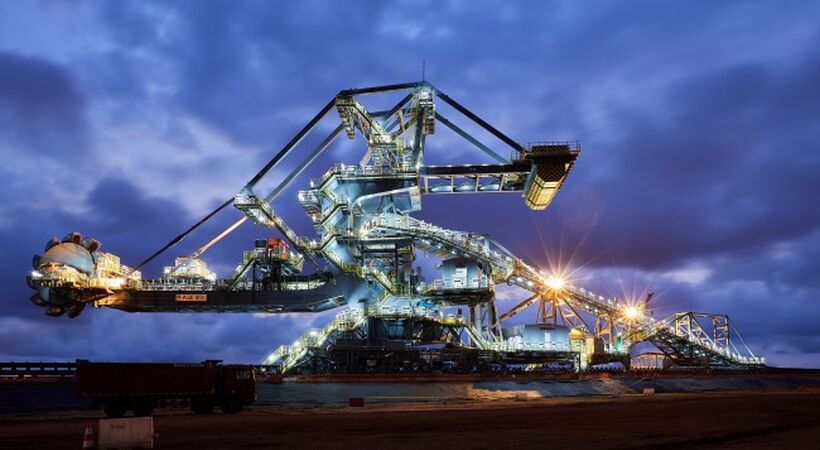Emirates Global Aluminium has announced the first exports of bauxite ore from Guinea Alumina Corporation (GAC), its mining project in the Republic of Guinea in West Africa.
The first exports of bauxite ore from GAC mark the completion of EGA’s strategic expansion upstream in the aluminium value chain to create an integrated global aluminium giant. The GAC project, and Al Taweelah alumina refinery where EGA began production in April, create new revenue streams for EGA and secure at competitive prices the raw materials that the UAE’s aluminium industry needs.
Bauxite is the ore from which aluminium is derived. Bauxite is refined into alumina, the feedstock for aluminium smelters. EGA previously relied on imports to meet all its alumina needs.
EGA's GAC project is one of the largest greenfield investments in Guinea in the last 40 years, and cost some $1.4 billion to develop. More than half the funds were provided by the largest greenfield mining project financing ever in Guinea - a $750 million loan from development finance institutions, export credit agencies and international commercial banks.
GAC is expected to make a direct, indirect and induced economic impact of some $700 million each year in Guinea once production is fully ramped-up, a 5.5 per cent boost to the national GDP.
EGA invested some $3.3 billion to develop Al Taweelah alumina refinery, which is the first in the UAE and only the second in the Middle East.
Abdulla Kalban, Managing Director & Chief Executive Officer of EGA, said: “Our first export of bauxite ore is a landmark moment for EGA and for Guinea. For EGA, it completes our strategic expansion upstream, making us an integrated global aluminium producer. For Guinea, the project creates economic opportunity and helps the country to expand its production of its biggest natural resource.
Mr Kalban continued: “On the GAC project, as in all EGA operations, safety is the first priority. I am particularly proud our safety performance on this project was world-class and I thank everyone at GAC and our contractors for this important achievement.”
GAC’s operations include a mine, railway infrastructure (some shared with other operators), and port facilities.
Bauxite ore is transported from GAC’s jetty at the port of Kamsar by self-propelled barge to a transshipment point operated by EGA in deeper water. This enables EGA to export bauxite ore from GAC using bulk cargo vessels that are amongst the world’s largest, including Capesize and Newcastlemax ships.
There were two main construction sites on the GAC project, some 90 kilometres apart.
More than 41,000 safety trainings were delivered on-site during the construction of the GAC project. The rate of recordable safety incidents was less than one-third of global mining benchmarks and construction was completed with zero fatalities.
Construction of the project took 30.3 million hours of work, the equivalent of one person working for more than 17,000 years and one-and-a-half times the number of working hours is took to build Burj Khalifa in Dubai.
The peak construction workforce was 4,650, of whom 85 per cent were Guinean and 67 per cent were from Boké, the region where GAC’s mine and port are located.
Around 1,000 permanent jobs have been created to operate the GAC project. GAC has invested more than $1.3 million on GAC Skills, a programme to develop high potential Guineans for permanent roles in the organisation.
GAC is expected to produce some 12 million tonnes of bauxite ore per year at full design capacity. This is equivalent to the weight of two Great Pyramids of Giza.
Bauxite ore from GAC is sold by EGA to customers around the world. EGA is importing bauxite ore for processing at Al Taweelah alumina refinery from Compagnie des Bauxites de Guinée under a long-term agreement, also using transshipment and Capesize vessels.
GAC has invested some $14 million so far in social and environmental projects in neighbouring communities, with projects including building 12 schools, eight health centres and running health awareness campaigns that have reached more than 90,000 people.








